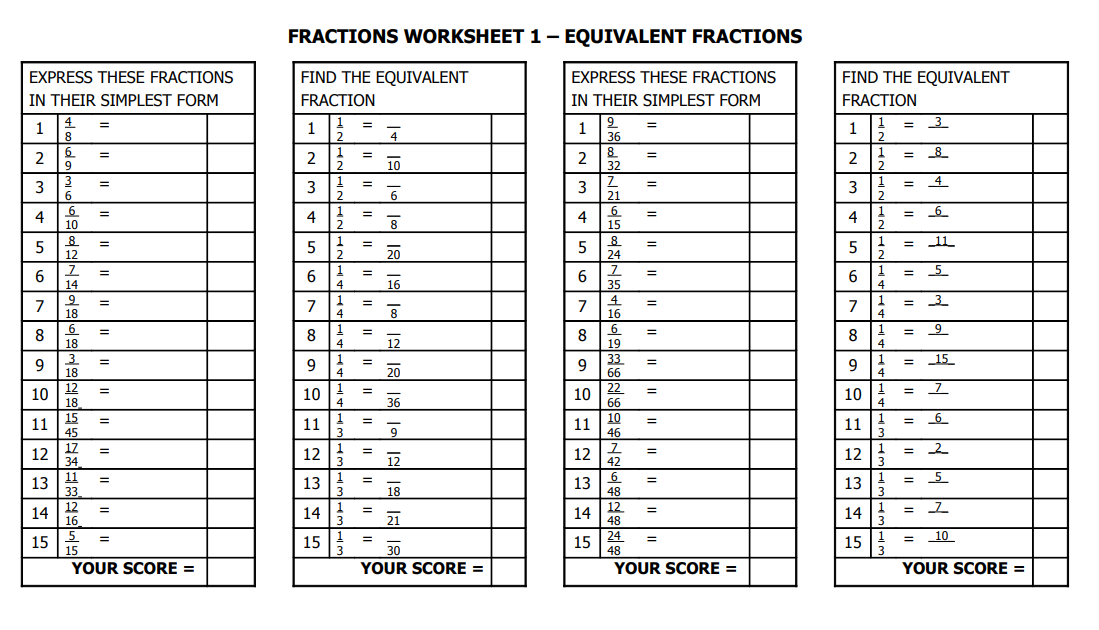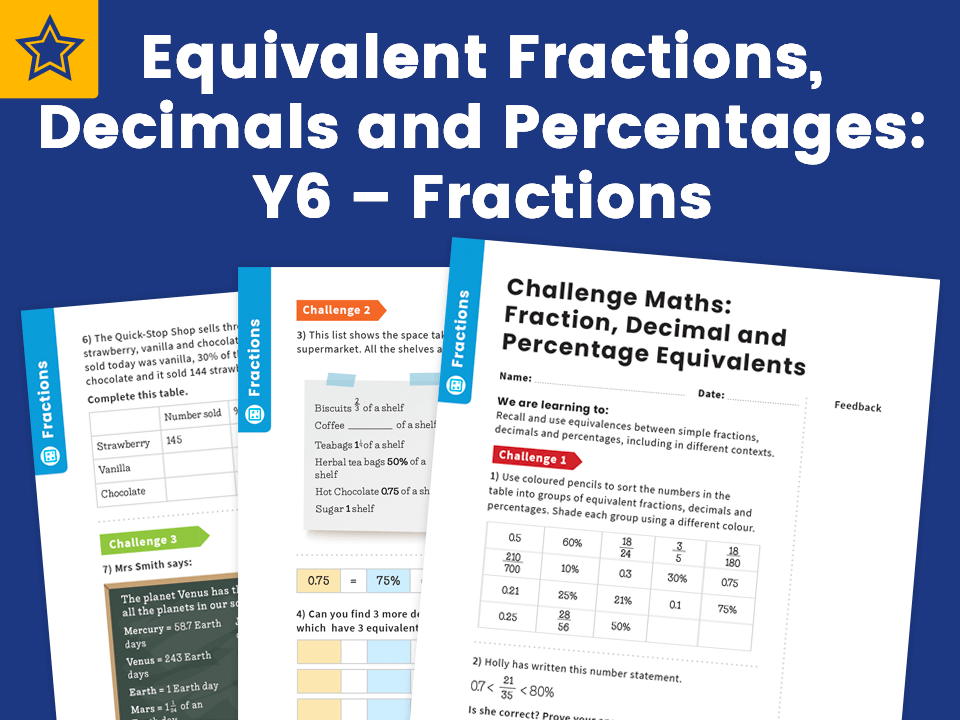Learning Outcomes
- How to Convert a Ratio to a Fraction. A ratio can be expressed as a fraction in a few different ways. A ratio can be a part-to-whole or a part-to-part ratio, and the methods for converting a ratio to each type of fraction are a little different. The calculator above will find both; continue reading to learn how to convert a ratio to a fraction.
- You may feel overwhelmed when you see fractions in an equation, so we are going to show a method to solve equations with fractions where you use the common denominator to eliminate the fractions from an equation.
1/2 times what equals 1/2? What divided by 1/4 equals 3/5? What is 2 over 3 as a percentage? How to calculate 3/4 plus 1/9 Is 1/2 greater than 1/3? What is 4.56 as a fraction? How to calculate 3/7 divided by 4/5 Equivalent Fractions of 3/9 What is the factorial of 6? 1/2 divided by what equals 3/4? Reduce 5/25 What times 1/3 equals 1/2?
- Use the least common denominator to eliminate fractions from a linear equation before solving it
- Solve equations with fractions that require several steps
You may feel overwhelmed when you see fractions in an equation, so we are going to show a method to solve equations with fractions where you use the common denominator to eliminate the fractions from an equation. The result of this operation will be a new equation, equivalent to the first, but with no fractions.
Pay attention to the fact that each term in the equation gets multiplied by the least common denominator. That's what makes it equal to the original!
EXAMPLE
Solve: [latex]frac{1}{8}x+frac{1}{2}=frac{1}{4}[/latex].
Solution:
| [latex]frac{1}{8}x+frac{1}{2}=frac{1}{4}quad{LCD=8}[/latex] | |
| Multiply both sides of the equation by that LCD, [latex]8[/latex]. This clears the fractions. | [latex]color{red}{8(}frac{1}{8}x+frac{1}{2}color{red}{)}=color{red}{8(}frac{1}{4}color{red}{)}[/latex] |
| Use the Distributive Property. | [latex]8cdotfrac{1}{8}x+8cdotfrac{1}{2}=8cdotfrac{1}{4}[/latex] |
| Simplify — and notice, no more fractions! | [latex]x+4=2[/latex] |
| Solve using the General Strategy for Solving Linear Equations. | [latex]x+4color{red}{-4}=2color{red}{-4}[/latex] |
| Simplify. | [latex]x=-2[/latex] |
| Check: Let [latex]x=-2[/latex] [latex]frac{1}{8}x+frac{1}{2}=frac{1}{4}[/latex] [latex]frac{1}{8}(color{red}{-2})+frac{1}{2}stackrel{text{?}}{=}frac{1}{4}[/latex] [latex]frac{-2}{8}+frac{1}{2}stackrel{text{?}}{=}frac{1}{4}[/latex] [latex]frac{-2}{8}+frac{4}{8}stackrel{text{?}}{=}frac{1}{4}[/latex] [latex]frac{2}{8}stackrel{text{?}}{=}frac{1}{4}[/latex] [latex]frac{1}{4}=frac{1}{4}quadcheckmark[/latex] |
Cookie 3 0 12 – protect your online privacy. In the last example, the least common denominator was [latex]8[/latex]. Now it's your turn to find an LCD, and clear the fractions before you solve these linear equations.
Notice that once we cleared the equation of fractions, the equation was like those we solved earlier in this chapter. We changed the problem to one we already knew how to solve!
Solve equations by clearing the Denominators
- Find the least common denominator of all the fractions in the equation.
- Multiply both sides of the equation by that LCD. This clears the fractions.
- Isolate the variable terms on one side, and the constant terms on the other side.
- Simplify both sides.
- Use the multiplication or division property to make the coefficient on the variable equal to [latex]1[/latex].
Here's an example where you have three variable terms. After you clear fractions with the LCD, you will simplify the three variable terms, then isolate the variable.
Example
Solve: [latex]7=frac{1}{2}x+frac{3}{4}x-frac{2}{3}x[/latex].
Show SolutionSolution:
We want to clear the fractions by multiplying both sides of the equation by the LCD of all the fractions in the equation.
| Find the least common denominator of all the fractions in the equation. | [latex]7=frac{1}{2}x+frac{3}{4}x-frac{2}{3}xquad{LCD=12}[/latex] |
| Multiply both sides of the equation by [latex]12[/latex]. | [latex]color{red}{12}(7)=color{red}{12}cdot(frac{1}{2}x+frac{3}{4}x-frac{2}{3}x)[/latex] |
| Distribute. | [latex]12(7)=12cdotfrac{1}{2}x+12cdotfrac{3}{4}x-12cdotfrac{2}{3}x[/latex] |
| Simplify — and notice, no more fractions! | [latex]84=6x+9x-8x[/latex] |
| Combine like terms. | [latex]84=7x[/latex] |
| Divide by [latex]7[/latex]. | [latex]frac{84}{color{red}{7}}=frac{7x}{color{red}{7}}[/latex] |
| Simplify. | [latex]12=x[/latex] |
| Check: Let [latex]x=12[/latex]. | |
| [latex]7=frac{1}{2}x+frac{3}{4}x-frac{2}{3}x[/latex] [latex]7stackrel{text{?}}{=}frac{1}{2}(color{red}{12})+frac{3}{4}(color{red}{12})-frac{2}{3}(color{red}{12})[/latex] [latex]7stackrel{text{?}}{=}6+9-8[/latex] [latex]7=7quadcheckmark[/latex] |

Now here's a similar problem for you to try. Clear the fractions, simplify, then solve.
Caution!
One of the most common mistakes when you clear fractions is forgetting to multiply BOTH sides of the equation by the LCD. If your answer doesn't check, make sure you have multiplied both sides of the equation by the LCD.
In the next example, we'll have variables and fractions on both sides of the equation. After you clear the fractions using the LCD, you will see that this equation is similar to ones with variables on both sides that we solved previously. Remember to choose a variable side and a constant side to help you organize your work.
Example
Solve: [latex]x+frac{1}{3}=frac{1}{6}x-frac{1}{2}[/latex].
Drama 2 0 6 Fractions Worksheets
Show SolutionSolution:
| Find the LCD of all the fractions in the equation. | [latex]x+frac{1}{3}=frac{1}{6}x-frac{1}{2},quad{LCD=6}[/latex] |
| Multiply both sides by the LCD. | [latex]color{red}{6}(x+frac{1}{3})=color{red}{6}(frac{1}{6}x-frac{1}{2})[/latex] |
| Distribute. | [latex]6cdot{x}+6cdotfrac{1}{3}=6cdotfrac{1}{6}x-6cdotfrac{1}{2}[/latex] |
| Simplify — no more fractions! | [latex]6x+2=x-3[/latex] |
| Subtract [latex]x[/latex] from both sides. | [latex]6x-color{red}{x}+2=x-color{red}{x}-3[/latex] |
| Simplify. | [latex]5x+2=-3[/latex] |
| Subtract 2 from both sides. | [latex]5x+2color{red}{-2}=-3color{red}{-2}[/latex] |
| Simplify. | [latex]5x=-5[/latex] |
| Divide by [latex]5[/latex]. | [latex]frac{5x}{color{red}{5}}=frac{-5}{color{red}{5}}[/latex] |
| Simplify. | [latex]x=-1[/latex] |
| Check: Substitute [latex]x=-1[/latex]. | |
| [latex]x+frac{1}{3}=frac{1}{6}x-frac{1}{2}[/latex] [latex](color{red}{-1})+frac{1}{3}stackrel{text{?}}{=}frac{1}{6}(color{red}{-1})-frac{1}{2}[/latex] [latex](-1)+frac{1}{3}stackrel{text{?}}{=}-frac{1}{6}-frac{1}{2}[/latex] [latex]-frac{3}{3}+frac{1}{3}stackrel{text{?}}{=}-frac{1}{6}-frac{3}{6}[/latex] [latex]-frac{2}{3}stackrel{text{?}}{=}-frac{4}{6}[/latex] [latex]-frac{2}{3}=-frac{2}{3}quadcheckmark[/latex] |
Now you can try solving an equation with fractions that has variables on both sides of the equal sign. The answer may be a fraction.
Drama 2 0 6 Fraction
In the following video we show another example of how to solve an equation that contains fractions and variables on both sides of the equal sign. Robofont 1 8 4 – the missing ufo editor.

Now here's a similar problem for you to try. Clear the fractions, simplify, then solve.
Caution!
One of the most common mistakes when you clear fractions is forgetting to multiply BOTH sides of the equation by the LCD. If your answer doesn't check, make sure you have multiplied both sides of the equation by the LCD.
In the next example, we'll have variables and fractions on both sides of the equation. After you clear the fractions using the LCD, you will see that this equation is similar to ones with variables on both sides that we solved previously. Remember to choose a variable side and a constant side to help you organize your work.
Example
Solve: [latex]x+frac{1}{3}=frac{1}{6}x-frac{1}{2}[/latex].
Drama 2 0 6 Fractions Worksheets
Show SolutionSolution:
| Find the LCD of all the fractions in the equation. | [latex]x+frac{1}{3}=frac{1}{6}x-frac{1}{2},quad{LCD=6}[/latex] |
| Multiply both sides by the LCD. | [latex]color{red}{6}(x+frac{1}{3})=color{red}{6}(frac{1}{6}x-frac{1}{2})[/latex] |
| Distribute. | [latex]6cdot{x}+6cdotfrac{1}{3}=6cdotfrac{1}{6}x-6cdotfrac{1}{2}[/latex] |
| Simplify — no more fractions! | [latex]6x+2=x-3[/latex] |
| Subtract [latex]x[/latex] from both sides. | [latex]6x-color{red}{x}+2=x-color{red}{x}-3[/latex] |
| Simplify. | [latex]5x+2=-3[/latex] |
| Subtract 2 from both sides. | [latex]5x+2color{red}{-2}=-3color{red}{-2}[/latex] |
| Simplify. | [latex]5x=-5[/latex] |
| Divide by [latex]5[/latex]. | [latex]frac{5x}{color{red}{5}}=frac{-5}{color{red}{5}}[/latex] |
| Simplify. | [latex]x=-1[/latex] |
| Check: Substitute [latex]x=-1[/latex]. | |
| [latex]x+frac{1}{3}=frac{1}{6}x-frac{1}{2}[/latex] [latex](color{red}{-1})+frac{1}{3}stackrel{text{?}}{=}frac{1}{6}(color{red}{-1})-frac{1}{2}[/latex] [latex](-1)+frac{1}{3}stackrel{text{?}}{=}-frac{1}{6}-frac{1}{2}[/latex] [latex]-frac{3}{3}+frac{1}{3}stackrel{text{?}}{=}-frac{1}{6}-frac{3}{6}[/latex] [latex]-frac{2}{3}stackrel{text{?}}{=}-frac{4}{6}[/latex] [latex]-frac{2}{3}=-frac{2}{3}quadcheckmark[/latex] |
Now you can try solving an equation with fractions that has variables on both sides of the equal sign. The answer may be a fraction.
Drama 2 0 6 Fraction
In the following video we show another example of how to solve an equation that contains fractions and variables on both sides of the equal sign. Robofont 1 8 4 – the missing ufo editor.
In the next example, we start with an equation where the variable term is locked up in some parentheses and multiplied by a fraction. You can clear the fraction, or if you use the distributive property it will eliminate the fraction. Can you see why?
3%1 6 Fraction
EXAMPLE
Solve: [latex]1=frac{1}{2}left(4x+2right)[/latex]. Vuescan 9 5 29 download free.
Show SolutionSolution:
1 5 6 Fraction
| [latex]1=frac{1}{2}(4x+2)[/latex] | |
| Distribute. | [latex]1=frac{1}{2}cdot4x+frac{1}{2}cdot2[/latex] |
| Simplify. Now there are no fractions to clear! | [latex]1=2x+1[/latex] |
| Subtract 1 from both sides. | [latex]1color{red}{-1}=2x+1color{red}{-1}[/latex] |
| Simplify. | [latex]0=2x[/latex] |
| Divide by [latex]2[/latex]. | [latex]frac{0}{color{red}{2}}=frac{2x}{color{red}{2}}[/latex] |
| Simplify. | [latex]0=x[/latex] |
| Check: Let [latex]x=0[/latex]. | |
| [latex]1=frac{1}{2}(4x+2)[/latex] [latex]1stackrel{text{?}}{=}frac{1}{2}(4(color{red}{0})+2)[/latex] [latex]1stackrel{text{?}}{=}frac{1}{2}(2)[/latex] [latex]1stackrel{text{?}}{=}frac{2}{2}[/latex] [latex]1=1quadcheckmark[/latex] |
Now you can try solving an equation that has the variable term in parentheses that are multiplied by a fraction.

